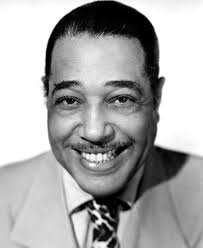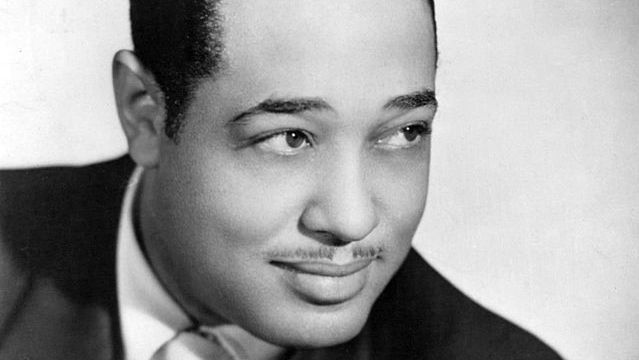Duke Ellington, a towering figure in jazz, is renowned for his sophisticated compositions, masterful band leadership, and distinctive piano playing. His career spanned more than five decades, during which he wrote and performed some of the most iconic pieces in the genre. Here’s a look at ten of Duke Ellington’s best songs, which have left an indelible mark on the landscape of jazz.
1. “It Don’t Mean a Thing (If It Ain’t Got That Swing)” (1931)
Released in 1931, “It Don’t Mean a Thing (If It Ain’t Got That Swing)” is a quintessential Ellington tune, co-written with lyricist Irving Mills. The song’s vibrant melody and catchy refrain encapsulate the essence of swing music. It became a defining anthem of the swing era and has been covered by countless artists. The song’s importance lies in its articulation of the genre’s energy and rhythm, establishing “swing” as a dominant style in jazz.
2. “Mood Indigo” (1930)
“Mood Indigo,” composed in 1930 with Barney Bigard and lyrics by Irving Mills, showcases Ellington’s ability to blend melancholy and sophistication. The piece is characterized by its rich harmonic structure and the use of muted brass instruments, creating a unique sound palette that evokes a deep, introspective mood. The song has become a jazz standard, appreciated for its emotional depth and intricate arrangement.
3. “Sophisticated Lady” (1933)
Co-written with Mitchell Parish and Irving Mills, “Sophisticated Lady” is a 1933 composition that highlights Ellington’s penchant for lush, elegant melodies. The song’s luxurious harmonies and romantic feel reflect the high society ambiance of the era. Its title and refined musical structure underscore Ellington’s ability to capture the essence of sophistication and grace in his music.
4. “Take the ‘A’ Train” (1941)
Written by Billy Strayhorn, Ellington’s longtime collaborator, “Take the ‘A’ Train” became Ellington’s signature tune after its release in 1941. The piece captures the spirit of New York City, with its upbeat tempo and vibrant melody evoking the bustling energy of the A Train subway line. This song played a pivotal role in defining the sound of the Ellington Orchestra and became an enduring symbol of the Big Band era.
5. “In a Sentimental Mood” (1935)
Composed in 1935, “In a Sentimental Mood” is one of Ellington’s most enduring ballads. Its lyrical, flowing melody and rich harmonic progressions have made it a favorite among jazz musicians and listeners alike. The song’s introspective character and emotional resonance showcase Ellington’s ability to convey deep sentiment through his compositions.
6. “Caravan” (1936)
“Caravan,” co-written with Juan Tizol in 1936, is notable for its exotic and adventurous sound, featuring an innovative use of rhythm and melody. The piece’s Spanish tinge and driving groove distinguish it from traditional jazz compositions of the time. “Caravan” has become a staple in the jazz repertoire, known for its compelling blend of rhythm and atmosphere.
7. “Prelude to a Kiss” (1938)
Released in 1938, “Prelude to a Kiss” is a sophisticated ballad that exemplifies Ellington’s ability to create music with a deep sense of romance and longing. The song’s delicate melody and intricate harmonic progressions have made it a cherished standard. Its subtle emotional expression and nuanced beauty reflect Ellington’s masterful compositional skill.
8. “Cotton Tail” (1940)
“Cotton Tail,” composed in 1940, is a high-energy swing tune that highlights Ellington’s rhythmic ingenuity and melodic inventiveness. The song’s lively tempo and complex arrangement showcase the virtuosity of Ellington’s orchestra. “Cotton Tail” is known for its driving rhythm and exhilarating solos, making it a favorite among both musicians and jazz enthusiasts.
9. “Don’t Get Around Much Anymore” (1942)
Originally titled “Never No Lament,” “Don’t Get Around Much Anymore” was composed in 1942 with lyrics added later by Bob Russell. The song’s catchy melody and swinging rhythm quickly made it a hit. Its wistful lyrics and upbeat arrangement capture the mood of the wartime era, resonating with audiences longing for normalcy and joy.
10. “Black, Brown, and Beige” (1943)
“Black, Brown, and Beige” is a large-scale work composed in 1943, which Ellington described as a “tone parallel to the history of the American Negro.” This ambitious suite combines jazz with elements of classical music, blues, and spirituals, reflecting Ellington’s vision of jazz as a serious, narrative art form. Its complex structure and thematic depth mark it as one of Ellington’s most significant and groundbreaking works.
These ten songs illustrate the breadth and depth of Duke Ellington’s contributions to jazz. His ability to blend innovation with tradition, and sophistication with accessibility, has made his music timeless, continuing to influence and inspire musicians and listeners around the world.


No responses yet